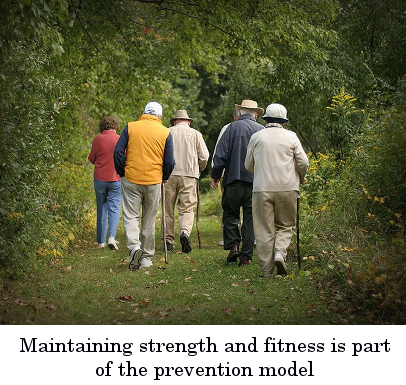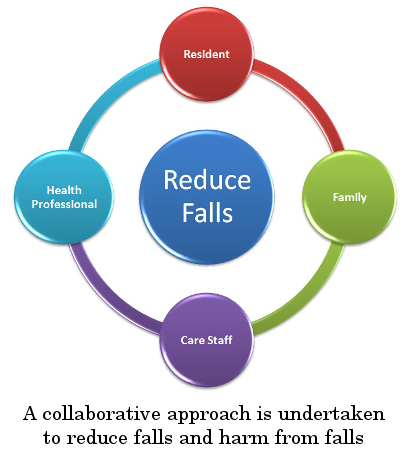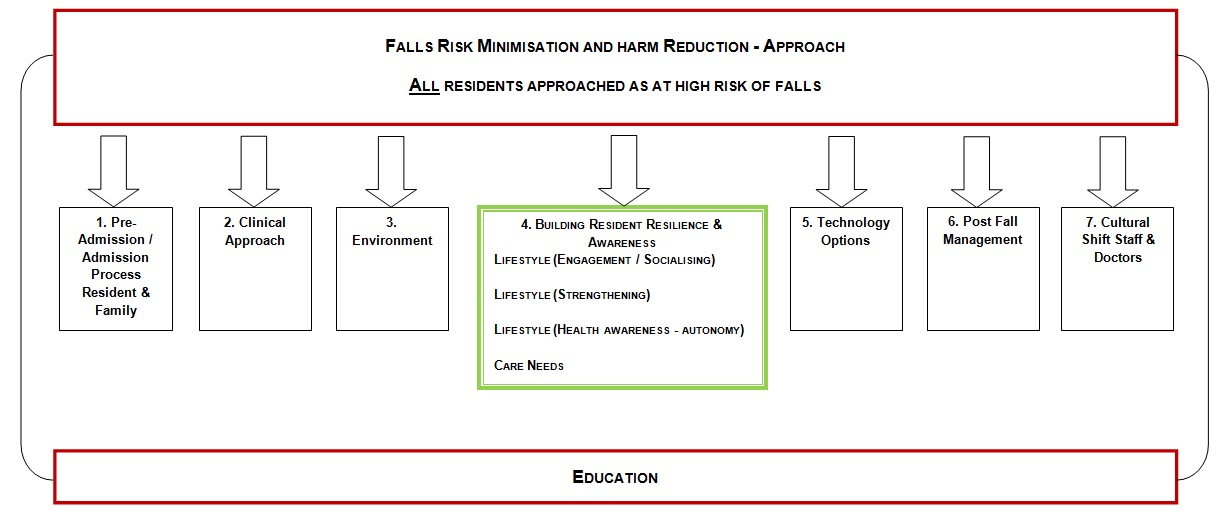A New Model of Care to prevent Falls in Residential Aged Care at Anglican Retirement (ARV) Villages
A New Model of Care to prevent Falls in Residential Aged Care at Anglican Retirement (ARV) Villages
The prevention of resident falls continues to challenge ARV and fall related incidents have remained relatively unchanged despite a number of organisational initiatives over the past 3 years. We know we have an aging population and residents in supported care are more likely to be frail, generally have long term health problems and are more prone to injury from a fall, compared to older people that live in the community. (ACSQHC - Preventing Falls in RACF Guidelines, 2009)
As an organisation our approach to falls management can be grouped into:
- Primary outcomes - the number of resident falls.
- Severity of falls - abrasions, fractures and death (Cochrane Collaboration 2010)
Falls data reveal the following consistent information:
- Most falls occur around the bed, are un-witnessed and often associated with toileting (ACSQHC, 2009)
We are looking at a different approach to tackle this issue. ARV's new approach will be to consider every new resident admission into residential care as a high falls risk. Traditionally, ARV's approach was completely the reverse. ARV relied on instruments like the FRAT to help identify residents at risk falls, but this created a clinical dichotomy. A tool like the FRAT focused ARV on the individual resident and on an individual response.

The new model places residents and their families at the centre of falls reduction and injury minimisation. It begins at the pre-entry level when families come to finalise their admission to the facility. The model empowers residents and their families by providing them with information to make informed decisions for things such as furniture choice, the use of correct foot wear, harm reduction garments, and engagement in activities to enhance and maintain physical strength.
The model shifts the falls prevention paradigm from a clinically paternalistic approach (where staff assume the full responsibility to identify and develop strategies to prevent falls) to a collaborative approach where residents, their families, care staff and health professional all work together to reduce falls and harm from falls.

Residents, their families, staff and consulting doctors all have a role in this model of care. The model is underpinned by education and the resident's journey starts during the pre-admission stage and continues throughout the resident's stay at the facility.
This approach is in its infancy and experience suggests that we're on the right trajectory. ARV hopes to have significant data within 12 months to successfully validate our approach to falls reduction and harm minimisation.
I am always interested in hearing how other organisations have dealt and are currently dealing with this challenging problem of preventing falls in RACF's. I will be presenting this paper to ARV's Executive board in early December so any contributions would be very helpful.
I sit on both the NSW Falls Network and TRIPP (Translating Research into Practice and Policy) Committees.
My contact details are:
sharon.butler@arv.org.au
0449 904 236
Sharon Butler
(Better Balance Leader)
0 comments